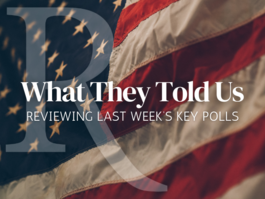How Green Was NAFTA?
By Froma Harrop
About 17 years ago, a New England business reporter answered the phone and found a friendly Texan on the other end. She had recently written about how local manufacturers were coping with Environmental Protection Agency rules that sharply curbed what they could throw down their drains. Compliance was costing them.
The caller hailed from McAllen, near the Rio Grande crossing to the Mexican city of Reynosa. He matter-of-factly said that the factories would have no waste-disposal problems south of the border. He'd help relocate them.
Stories like this one nearly stopped the North American Free Trade Agreement from becoming reality in 1994. Environmentalists feared the agreement would create a polluters' haven in Mexico. To save the treaty, negotiators wrote a side agreement that purported to address the environmental concerns.
Did it? If you listen to the Democratic candidates bashing NAFTA, the answer would seem "no." And many environmental groups say the side agreement is nearly worthless.
As Margrete Strand, a trade expert at the Sierra Club, told me: "We were one of the groups that opposed NAFTA back in the day, because we felt there had to be a binding environmental chapter (as opposed to a side agreement). What we've seen since has been kind of an affirmation that that was the right decision to take."
It's undeniable that Mexico continues to face many environmental crises, among them deforestation, soil erosion and water contamination. And there is general agreement that NAFTA's environmental watchdog -- the Commission for Environmental Cooperation (CEC) -- has failed to live up to its promise.
But many argue that NAFTA advanced the cause in other ways. Before NAFTA, Mexico's environmental awareness was close to zero. Only a few artists and academics spoke out on the issue. By tying such concerns to trade, the Mexican government for the first time became accountable for environmental performance. Today, Mexican communities and green groups have joined to press for change.
In April 2001, Mexican environmentalists scored a landmark victory. A tourism building boom on the Yucatan Peninsula was threatening an important nesting area for endangered sea turtles. Local and international activists protested plans for a development on X'cacel, a beach 67 miles south of Cancun. Mexico's environmental minister withdrew permits for a 1,400-room hotel there.
Juan Carlos Cantu was a leader in that campaign. I asked Cantu, now Mexican program manager for Defenders of Wildlife, whether he thought NAFTA helped the environmental cause.
He agreed that the CEC was "very much useless" in arbitrating cases where environmental laws are being broken. But it has served as a forum to discuss and eventually promote regulations on such challenges as invasive species. And, he added, "It does work as an embarrassment for the Mexican government whenever it decides that a particular case does merit an in-depth study."
Post-NAFTA trade agreements, meanwhile, have done a somewhat better job on the environmental issues, according to the Sierra Club's Strand. For example, the environmental provisions in the Central American Trade Agreement, though weak, at least are in the body of the accord.
And the U.S.-Peru free trade agreement "took an important step forward," she said, in tightening the environmental rules. Among other things, it stopped the flow of illegally logged timber from Peru.
So here's the question: Was NAFTA a bad precedent or a good start?
The optimist in me chooses the latter. I don't think anyone today could openly sell Mexico as a place where factories can dump hazardous wastes. And who would have thought 20 years ago that the sea turtle could stop a major tourist development on the Yucatan. That sounds like progress.
COPYRIGHT 2008 THE PROVIDENCE JOURNAL CO.
DISTRIBUTED BY CREATORS SYNDICATE, INC.
Views expressed in this column are those of the author, not those of Rasmussen Reports.
See Other Political Commentary.
See Other Commentaries by Froma Harrop.
Rasmussen Reports is a media company specializing in the collection, publication and distribution of public opinion information.
We conduct public opinion polls on a variety of topics to inform our audience on events in the news and other topics of interest. To ensure editorial control and independence, we pay for the polls ourselves and generate revenue through the sale of subscriptions, sponsorships, and advertising. Nightly polling on politics, business and lifestyle topics provides the content to update the Rasmussen Reports web site many times each day. If it's in the news, it's in our polls. Additionally, the data drives a daily update newsletter and various media outlets across the country.
Some information, including the Rasmussen Reports daily Presidential Tracking Poll and commentaries are available for free to the general public. Subscriptions are available for $4.95 a month or 34.95 a year that provide subscribers with exclusive access to more than 20 stories per week on upcoming elections, consumer confidence, and issues that affect us all. For those who are really into the numbers, Platinum Members can review demographic crosstabs and a full history of our data.
To learn more about our methodology, click here.



